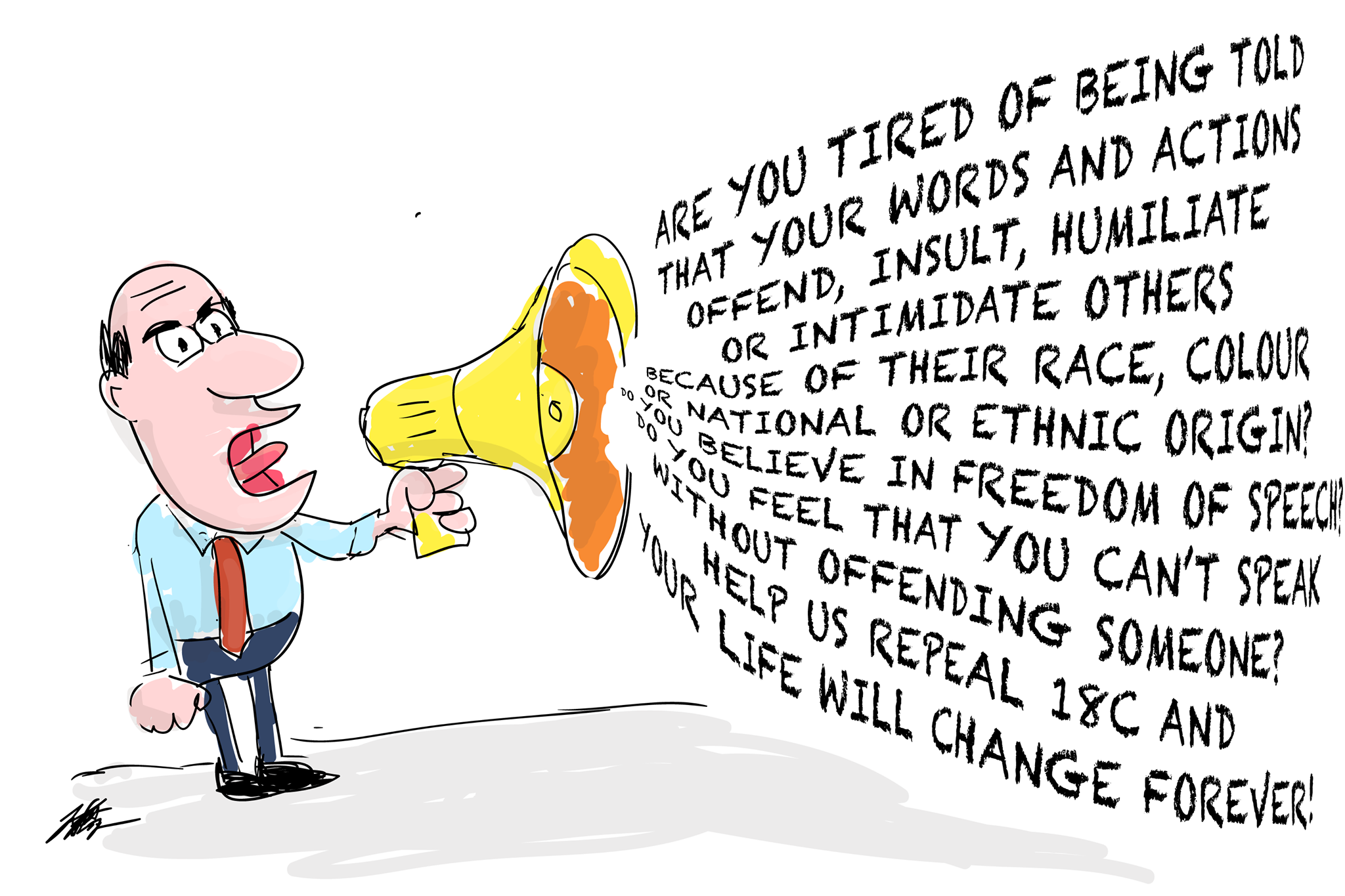It’s Monday morning. Another session of the Joint Committee on Human Rights public hearing is set to commence. A group of ten parliamentary committee members sit in formation around the back of an old carpeted room, deep in Victorian parliament. Hundreds of papers are strewn across their imposing configuration. A desk of expert witnesses, prepped with their own neat folders, faces them square on.
Chairman Ian Goodenough opens the public hearing into ‘Freedom of Speech in Australia’ with some broad-faced questions, and the politics resume. Taking turns, the committee members reveal their views on section 18C of the Racial Discrimination Act (1975), Australia’s controversial racial vilification law. It’s a roller coaster of emotion and power plays in just one day of the Committees public hearings. Specifically, the Committee is looking into whether section 18C of the Racial Discrimination Act (1975) is an impermissible restraint on freedom of speech. Liberal Senator James Paterson asks the witnesses pointed questions. He seems satisfied that their answers are fitting in with a grand, secret scheme of his, like some villainous, parliamentary Socrates. WA Member for Brand, Madeleine King is fair and sympathetic to everyone. Her support of the law as it stands is only occasionally detectable through soft and scoping questions designed to highlight the negative impacts of racism. NSW Member for Berowra Julian Leeser, on the other hand, channels the sad incredulity of lovelorn Moe Szylak through his repeated disappointment that, no, the witnesses did not yet read his submission (much to the amusement of the rest of the committee).
But, clearing the fog of media misrepresentation and looking past the vague political designs of parliamentarians, what is really going on with 18C, and why is it now receiving a joint committee hazing? First, we must consider the purpose of 18C. Broadly, it operates as a symbolic law, it is Australia’s primary legal signal that racism is not okay. Importantly, 18C does not create a criminal offence. It will not, generally speaking, result in any serious consequences for anyone who contravenes it. Andrew Bolt, for example, was found to have contravened 18C in 2009 when he made offensive and insulting statements in the Herald Sun about certain Aboriginal people with Caucasian features. The resulting ‘punishment’ was that the Herald Sun had to publish a ‘corrective notice’ about the relevant articles. But the original articles, with the offensive comments intact, are still easily available online ‘for archival purposes’. Neither Bolt nor the Herald Sun had to pay damages, or even apologise for the offensive comments. In this case at least, the effect on freedom of speech was apparently minimal.
The true operation of the law is clear. It is not coercive. Instead, it results in expressive remedies that are far less onerous than those of other laws. For example, defamation laws, which do result in large remedial damages, curtail freedom of speech far more directly than 18C does. 18C only signals that you can’t make racist statements, and this is not a bad thing. But 18C has also been criticised as having too low a threshold for harm—that is, the mere requirement of ‘offense’ or ‘insult’ is dismissed as an instance of ‘political correctness gone mad’. Such a reading of 18C ignores how the Courts have chosen to interpret these key terms. The legal threshold is, in fact, far higher than common parlance might suggest. 18C requires that the statement in question has a “profound and serious” effect on the targeted person or group. 18C does not cover “mere slights” or statements that result in ‘personal hurts’ and nothing more. ‘Mere slight’ was how the Federal Circuit Court characterised statements made online by two Queensland University of Technology students in an infamous 2016 case, after a university staff member, Ms Cindy Prior, ejected them from an Indigenous-only computer room. Why the Human Rights Commission did not exercise its discretion to dismiss this case at first instance remains a controversial question, considering that the claim was found to have “no reasonable prospect of success” by the Circuit Court.
The mismanagement of the Prior case drew much criticism to the already widely (and unfairly) slated law. It was, in large part, what spawned this recent Joint Committee into Freedom of Speech, and has led to several calls for the codification of the Courts’ more onerous interpretation of the threshold test. But repealing or scaling back a law with a purpose tied up in symbology sends a powerful message. If we scale back a law operating as a legal signal to dissuade a particular activity, we implicitly support the opposite view—that is, if we repeal the only law in Australia that directly signals that ‘racist insults are not okay’, we send a message that seems to endorse the view that ‘sometimes they are’. If we’re really looking to protect freedom of speech in Australia, the erosion of 18C protection is not the answer.
Words by Mara Papavassiliou, Art by Natalie Thompson
This article first appeared in print volume 88 edition 2 STOP

